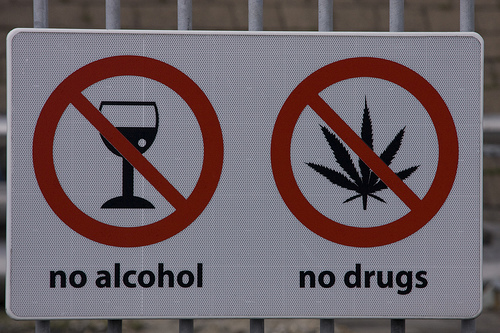Terminating alcohol withdrawal occurrence

Terminating alcohol withdrawal occurrence.
Terminating alcohol withdrawal occurrence: Putting to check alcohol withdrawal
It baffles my imagination why authority in their effort of controlling alcohol usage, advices that produces of these substances must sound warning to their clients about the dangers of using the same substance. Today as things stand, it is in the public domain that alcohol is one of the most abused substance with serious and very fatal consequences during the withdrawal process. As experts from AWAREmed Health and Wellness resource Center under the able leadership of doctor Dalal Akoury, we want to help you get the right information about these threats so that you may take the right and timely precautionary action. Because of the nature of this substance, ideally we cannot plead ignorant of the dangers of misuse of alcohol because a part from these health information, every advert mounted on the advertisements platforms will be very glittering but in that glitters, there will be a warning remark that excess alcohol consumption is harmful to your health. As it is the norm in this site, doctor Dalal Akoury will be taking us through the discussion of terminating alcohol withdrawal occurrence to unlock some of the hidden concerns we have progressively.
Terminating alcohol withdrawal occurrence: What causes alcohol withdrawal?
In many cases alcohol withdrawal is caused by neurotransmitter rebound. When alcohol overpowers the action of a neurotransmitter system over a long period of time the neurotransmitter system adjusts by working extra harder to defeat the effect of the alcohol and to try and function at normal levels in spite of the presence of the alcohol. When the alcohol is suddenly removed from the body the neurotransmitter system still continues to function far in excess of normal levels. Since alcohol is no longer present to suppress the effects of this hyperactivity, what we now see are effects which are precisely the opposite of those caused by alcohol. Just for a better understanding, let us illustrate this with the game of tug of war where two parties pool at a balanced position, in this game, if one party let loose the rope unexpectedly, then their opponents will fly in the opposite direction, in the same way, when alcohol is suddenly eliminated from the neurotransmitter system to which alcohol has been fighting to overcome its effects, the neurotransmitter will fly also in the opposite direction.
According to the experts at AWAREmed Health and Wellness Resource Center, the main neurotransmitter system involved in alcohol withdrawal is the GABA system. The effects of alcohol on GABA system lead to relaxation, sleep, calm, and the soothing of panic. When alcohol is suddenly removed from the brain then the neurotransmitter rebound in the GABA system leading to insomnia, nightmares, hallucinations, anxiety, panic, muscle cramps, and seizures. Remember that benzodiazepines will affect the GABA system in a much similar way as doe’s alcohol and this is why benzodiazepine withdrawal is also life-threatening hence the need of terminating alcohol withdrawal occurrence. This may posse certain challenges to many and if you’re in that category, you can always schedule for an appointment with doctor Akoury for a more detailed professional advice.
Terminating alcohol withdrawal occurrence: Putting to check alcohol withdrawal
http://www.integrativeaddictionconference.com/wp-admin













 Amyl nitrites (
Amyl nitrites (
 Alcohol dependence is also known as alcoholism and it occurs when one
Alcohol dependence is also known as alcoholism and it occurs when one  Medications can also help in preventing seizures before they start. Benzodiazepines are the recommended drugs for people undergoing withdrawal of alcohol. They inhibit nerve cell excitability which deals with the overstimulation resulting from the brain as a result of alcohol effects. Examples include halazepam and lorazepam. Alcohol withdrawal symptoms can begin from as early as two hours after the last drink and can persist for up to weeks. The effects range from shaking to delirium tremens. Clinical management of alcohol withdrawal is to minimize the severity of symptoms and facilitate an entry into a treatment program.
Medications can also help in preventing seizures before they start. Benzodiazepines are the recommended drugs for people undergoing withdrawal of alcohol. They inhibit nerve cell excitability which deals with the overstimulation resulting from the brain as a result of alcohol effects. Examples include halazepam and lorazepam. Alcohol withdrawal symptoms can begin from as early as two hours after the last drink and can persist for up to weeks. The effects range from shaking to delirium tremens. Clinical management of alcohol withdrawal is to minimize the severity of symptoms and facilitate an entry into a treatment program.




